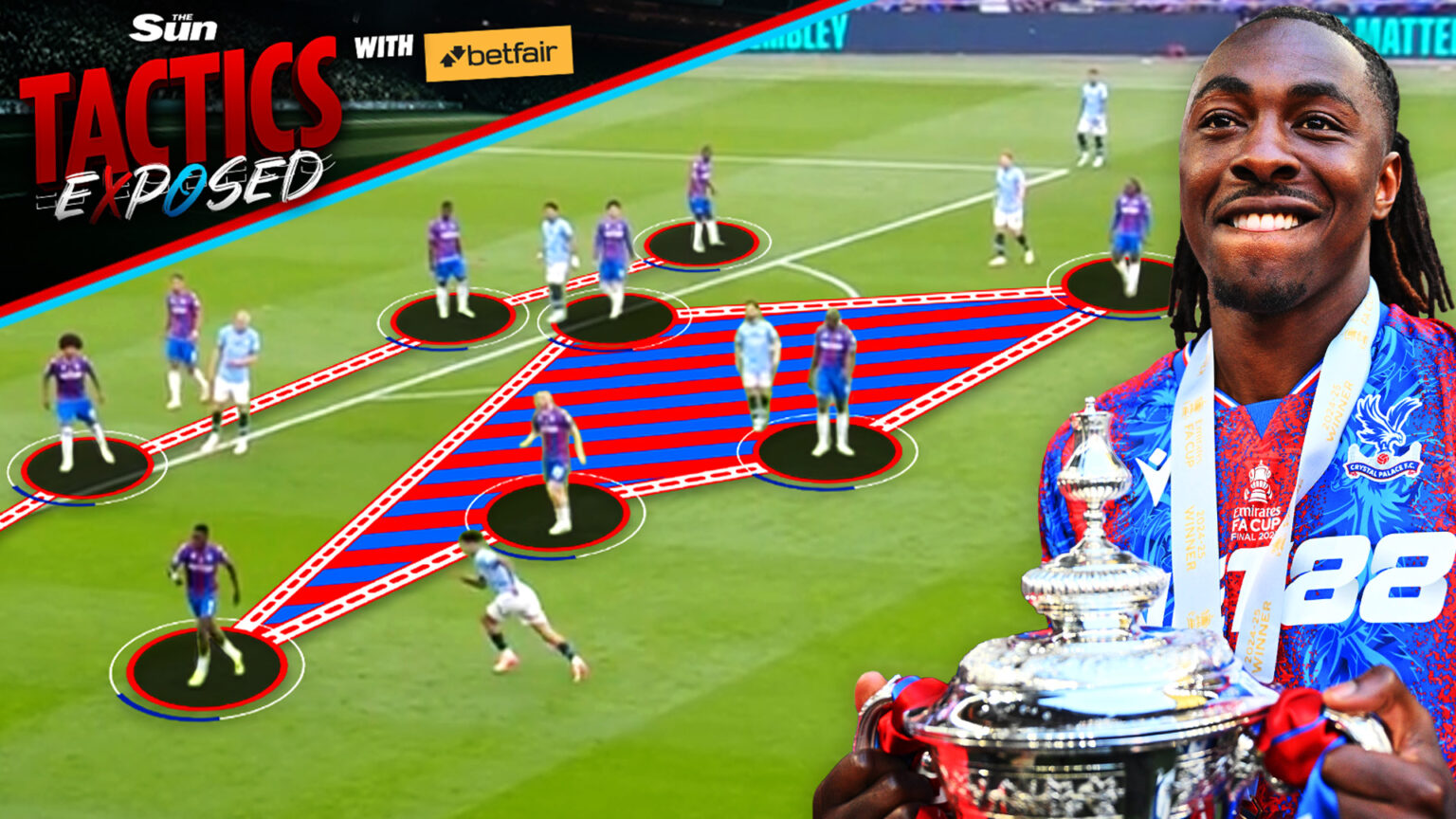CRYSTAL PALACE made history by winning their first major trophy – after a tactical masterclass from Oliver Glasner.
The Eagles outsmarted Pep Guardiola’s Manchester City to record a deserved 1-0 win at Wembley on Saturday.
Glasner employed similar tactics to his team’s 5-2 loss against City earlier this season.
But SunSport’s Dean Scoggins reveals how subtle tweaks to the system paid off for Palace.
How did Palace set up?
Glasner had an absolutely brilliant plan.
It’s great for a club like Palace to win their first trophy.
The Austrian said in his pre-match press conference that if Pep plays the same way again as he did when they beat them 5-2 at the Etihad, he’ll have a plan for it. I’ve got his number.
And he did. He had his number. Everyone had to be well drilled, but they were.
It’s a setup which we know they play 3-4-3 – but it was of a 5-2-3.
They set up with the wing backs very deep, Tariq Mitchell on one side and Munoz the other side.
Munoz got forward a lot more than Mitchell did, but essentially they were a back five.
As well as the midfield two in front, it was where Eze and Ismaila Sarr got in the positions to stop City.
Manchester City set up in a fairly predictable shape, but it was Nico O’Reilly who went into the inside left position
Eze and Sarr dropped in alongside the midfield two, and then Meteta in front created a semicircle around in front of the midfield.
Everywhere you looked, it looked like Palace had more players.
Who caught the eye?
The work rate of Eze and Sarr was so impressive.
It showed how much Glasner trusted his forward players to do a defensive job and then be so compact between the lines.
You also have give a hat tip to Adam Wharton, who as a young English midfield player was like the marshal in there.
You could see him pointing, the conversations he was having with teammates.
It’s a relief he’s fine after suffering a concussion, which halted his celebrations.
But his mind was definitely on it when he was in the game. He was absolutely brilliant.
How did Mateta affect the game?
He might not have had many chances in front of goal, but Mateta was crucial to Palace’s success.
We know he holds the ball up well. We know he makes good runs in behind.
Palace have said before the game, we know that City will have a deep-lying midfield player who will sit, who will drop off and recycle possession and go side to side.
Mateta had a massive job to do – and that was basically to go and mark that player out of possession.
As a striker, he was man-marking Bernardo Silva for the majority of the game.
City later swapped it round and it was De Bruyne trying to be the playmaker. Mateta did the same thing.
It was a thankless role but a crucial one that stopped City getting the ball to their danger men.
How did Palace score?
Glasner had a plan with Daniel Munoz where he was looking to exploit gaps left by Nico O’Reilly.
When the ball goes into Mateta, Munoz is only thinking one thing – get down the wing.
It’s the understanding of the tactic and when to go, when to gamble.
Because if you choose the wrong time against Manchester City, you’ve got Jeremy Doku to chase going back the other way.
Where did City go wrong?
Aside from the penalty, Omar Marmoush didn’t get in the game at all.
Erling Haaland had one moment early in the first half where I thought, City are going to break them down here.
De Bruyne went back into the pocket, and City forced Palace back into their area around the penalty spot.
The Belgian hit a lovely cross, which Dean Henderson makes a great save from.
After that, it wasn’t working – but they didn’t change it up.
City didn’t put the fullbacks on the touchline and push the wingers inside.
They could have put Haaland up the middle to try and push Palace into a 3v3 at the back.
But they didn’t. It was the same set-up all the way through.
They just didn’t have that man in front of the back three or back four to dictate play.
Mateta was the key and gave them a problem with the way he was marking.
Read the full article here

